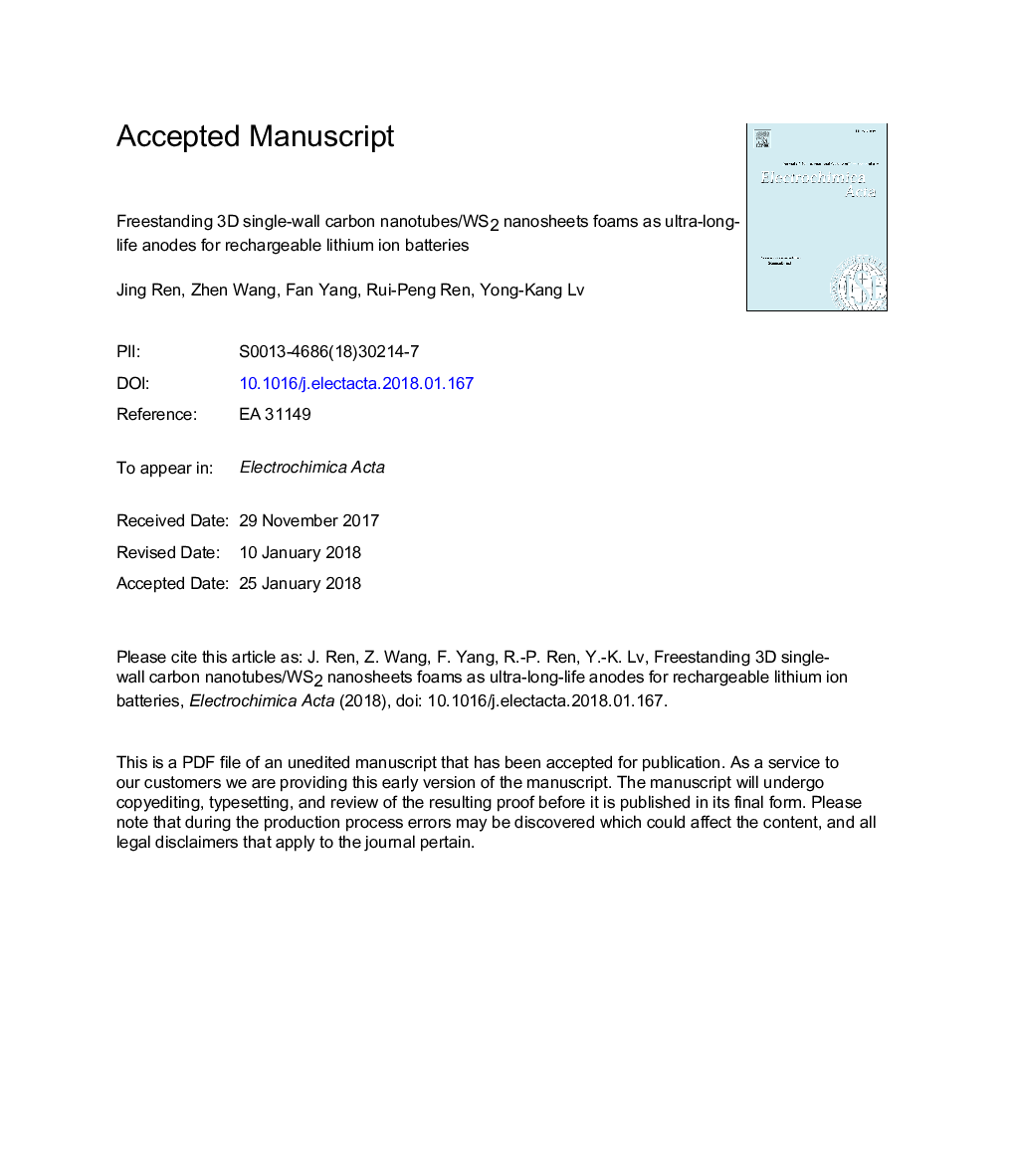| Article ID | Journal | Published Year | Pages | File Type |
|---|---|---|---|---|
| 6603910 | Electrochimica Acta | 2018 | 17 Pages |
Abstract
Tungsten disulfide (WS2) have been attracting increasing attention as anode materials for high performance lithium-ion batteries (LIBs) due to their high theoretical capacity and large interlayer spacing. However, the low conductivity and volume expansion during lithiation/delithiation process will lead to the low specific capacity and rapid capacity fading during long-term cycling. Here, we have used flexible single-wall carbon nanotubes (SWCNTs) with ultra-high electrical conductivity as conductive materials to construct a three-dimensional (3D) WS2@SWCNT foam by a simple hydrothermal method followed by freeze-drying process. The 3D structure not only provide good electronic transportation pathways, but also can accommodate huge volume change of WS2 due to the mechanical flexibility of SWCNTs, leading to the excellent cyclability as anode materials for LIBs. Benefiting from these excellent properties, the WS2@SWCNT foam nanostructure delivers a specific capacity of 1050â¯mAh gâ1 at a current density of 0.1â¯Aâ¯gâ1, high reversible capacity of 688.3â¯mAh gâ1 after 1000 cycles and a capacity retention of 113% over 1000 cycles at 1â¯Aâ¯gâ1.
Keywords
Related Topics
Physical Sciences and Engineering
Chemical Engineering
Chemical Engineering (General)
Authors
Jing Ren, Zhen Wang, Fan Yang, Rui-Peng Ren, Yong-Kang Lv,
